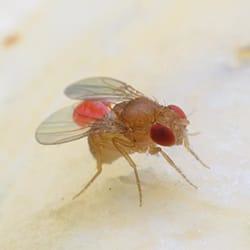Hartford is not only the capital of our state but it is also a hub of attractions for those far and wide--including flies. While there are many kinds of flies, they all bear the commonality of belonging to the ‘Diptera’ order and having one pair of wings. Below are common flies that you may find around your Hartford home:
- Bottle Fly (Or Blow Fly): Bottle flies range from 1/8-5/8 of an inch long, in adulthood. They are roughly the size of house flies, with mouthparts designed as sponges, and two antennae. In adulthood, bottle flies range from a dull brassy or black color to a shimmering green/blue. Larvae are white or light yellow in color.
- Fruit Fly: Fruit flies, including their wings, are roughly 1/8 of an inch long. In adulthood, fruit flies have feathery antennae and wings split in two places. Adults are brown-black, brown-yellow, or tan and their eyes tend to be bright red. Larvae are almost white with the exception of black mouth hooks and yellow breathing pores.
- House Fly: An adult house fly ranges from 1/8 to 1/4 of an inch in length. Adults have silver tops and gold bottoms, with 4 thin strips on the thorax, pale abdomens, and mouthpieces like sponges. Larvae lack eyes and legs, look oily, and bear a cream color. Adults are gray-colored.
- Cluster Fly: Adult cluster flies range from 3/8th to 1/2 an inch long, are black with yellow thorax and wing hairs. Cluster fly larvae and eggs are not often seen as they are buried near earthworm tunnels.
- Drain Fly: Adult drain (or moth) flies span 1/5th to 1/6th of an inch long. They range from gray to darker shades, appear to be covered in hair, and have big wings. Drain fly larvae are roughly 3/8th inches long and look like worms.
Are Flies Dangerous?
Flies, like many other household pests, are constantly in search of shelter, food, and a safe place to deposit eggs. What do they eat? This can vary depending on the fly, but they often eat fresh and rotting vegetation, trash, human waste, meat, fermented liquids (such as alcohol, vinegar, and cider). Their quest for shelter and breeding spots, as well as their taste for human foods and waste, make homes attractive.
Are flies dangerous? While the danger may not be obvious, flies regurgitate foods by liquefying them, which spreads illnesses and soils food. They also contaminate foods by traveling. They may, for example, travel from garbage or excrement to your food. Thus, flies, while infamously annoying, are a significant source of food contamination and the spread of diseases.
Fly Prevention
While fly elimination is a daunting task to take on alone, there are a few steps you can take to reduce flies:
- Reduce food sources. Flies are after food, so eliminating traces of food can go a long way in reducing flies.
- Remove breeding areas. Flies, like many pests, seek safe places to procreate. Removing these opportunities is a helpful deterrent.
- Avoid toxic-chemical-based pest control methods as they are harmful both to people and pests.
- Seal up entry points into the home (screens, doors, door sweeps, windows, foundation cracks, etc.)
- Keep the interior and exterior clear of food, trash, yard debris, and excrement.
- Reach out to a professional pest control company.
American Pest Solutions
Despite the best prevention methods, flies remain invasive pests that procreate quickly. A call to American Pest Solutions is the most effective and safest way to ensure that you can get back to enjoying your home without fear of food contamination, illness, or irritation. Ongoing professional assistance from the experts is your best bet for getting the most out of your Hartford home. Contact us today to find out how we can help eliminate flies and other pests today!

